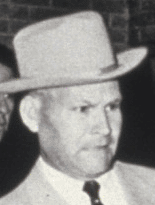The power of the still image
Recently I was thinking about how the power of images have, perhaps, been diminished in my lifetime. Today, we are pretty much bombarded with media. Every event seems to have near-endless press coverage. Yet, in my lifetime, that wasn't always the case. In November 1963, I was still in diapers, but those a bit older than me will always remember Bob Jackson's Pulitzer-prize winning photograph of Jack Ruby shooting Lee Harvey Oswald.
I started thinking about the differences between the moving image and the still frame when I came across a Quicktime clip of the shooting at the Newseum's website. In the video version, things happen so quickly, it looks like chaos. Jackson's still frame, however, freezes the moment for us... and it's a truly transitional moment for everyone in the photograph. I count ten faces, either full face or enough to register an emotion.
Five seem to have recognized what has happened... or at least that something has happened. These are:
The cop in the white suit:
The cop in uniform at the back
a partially-blocked fellow in a black hat
and a guy reaching an arm over towards Ruby.
And of course, Oswald himself.
Three others, behind the cop in the white suit, have turned to see what's going on, but it doesn't appear they are registering any alarm.
Finally, the elderly cop on the far left
and the reporter in the raincoat don't seem to have noticed anything at all.
I must guess that a had Jackson fired his Nikon a fraction of a second later, every face would be showing the same look of shock as the one found on the cop handcuffed to Oswald.
A few years ago, I watched a documentary on HBO about famous sports photographs. Naturally, Neil Leifer's amazing shot of Muhammad Ali standing atop Sonny Liston was included.
What intrigued me was a short film clip of the same event; Ali is strutting around, barely restrained by the ref, and very briefly waves his arm. It's over in a microsecond. In Liefer's photo, it seems like Ali is posing, flexing his powerful right arm, shouting his excitement over the sprawling Liston. In the film, he's just dancing around. The differences are striking. In a way, the film is much more historically accurate, yet the still has become an icon.


0 Comments:
Post a Comment
<< Home